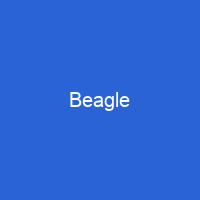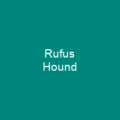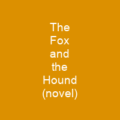Beagle

The modern breed was developed in Great Britain around the 1830s from several breeds, including the Talbot Hound, the North Country Beagle, the Southern Hound, and possibly the Harrier. Beagles have been depicted in popular culture since Elizabethan times in literature and paintings.
About Beagle in brief
 The beagle is a scent hound, developed primarily for hunting hare. The modern breed was developed in Great Britain around the 1830s from several breeds, including the Talbot Hound, the North Country Beagle, the Southern Hound, and possibly the Harrier. Beagles have been depicted in popular culture since Elizabethan times in literature and paintings, and more recently in film, television, and comic books. From medieval times, beagle was used as a generic description for the smaller hounds, though these dogs differed considerably from the modern breed. Elizabeth I referred to the dogs as her singing beagles and often entertained guests at her royal table by letting her Pocket Beagles cavort amid their plates and cups. Beagle is the primary breed used as detection dogs for prohibited agricultural imports and foodstuffs in quarantine around the world. It is a popular pet due to its size, good temper, and a lack of inherited health problems. The origin of the beagles is not known, but in the 11th century, William the Conqueror brought the St. Hubert Hound and theTalbot hound to Britain. In Britain both of these strains were then crossed with Greyhounds to give them speed and stamina for deer hunting. The rough and smooth-coated beagle survived until the beginning of the 20th century until it is now extinct, having been absorbed into the standard. The beagle has a great sense of smell and superior tracking instincts, and is intelligent.
The beagle is a scent hound, developed primarily for hunting hare. The modern breed was developed in Great Britain around the 1830s from several breeds, including the Talbot Hound, the North Country Beagle, the Southern Hound, and possibly the Harrier. Beagles have been depicted in popular culture since Elizabethan times in literature and paintings, and more recently in film, television, and comic books. From medieval times, beagle was used as a generic description for the smaller hounds, though these dogs differed considerably from the modern breed. Elizabeth I referred to the dogs as her singing beagles and often entertained guests at her royal table by letting her Pocket Beagles cavort amid their plates and cups. Beagle is the primary breed used as detection dogs for prohibited agricultural imports and foodstuffs in quarantine around the world. It is a popular pet due to its size, good temper, and a lack of inherited health problems. The origin of the beagles is not known, but in the 11th century, William the Conqueror brought the St. Hubert Hound and theTalbot hound to Britain. In Britain both of these strains were then crossed with Greyhounds to give them speed and stamina for deer hunting. The rough and smooth-coated beagle survived until the beginning of the 20th century until it is now extinct, having been absorbed into the standard. The beagle has a great sense of smell and superior tracking instincts, and is intelligent.
It has a good temper and is very loyal to its owner, even to the end of its life. It can be difficult to train a beagle as it can be very aggressive and can be aggressive towards other dogs. It also has an excellent scenting ability, and has a very good sense of when to stop and when to move on to the next area. It was developed to hunt hare and rabbit in the 18th century. The Southern Hound was a tall, heavy dog with a square head, and long, soft ears, and was common from south of the River Trent and probably closely related to the Tal Bot Hound. The North Country beagle, possibly a cross between an offshoot of the Tal bot stock and a Greyhound, was bred chiefly in Yorkshire and wascommon in the northern counties. Although there were even records of one making an appearance at a show as late as 1969, this variety of dog is now an extinct standard. These genetic lines are now extinct but modern breeders have attempted to recreate the variety. The Pocket Beagle stood 8 to 9 inches at the shoulder and was small enough to fit in a \”pocket\” or saddlebag, they rode along on the hunt. Although details of the pack’s lineage are not recorded it is thought that North CountryBeagles and Southern Hounds were strongly represented. Prince Albert and Lord Winterton also had Beagle packs around this time, but Honeywood’s pack was regarded as the finest of the three in the breed, but no longer in use.
You want to know more about Beagle?
This page is based on the article Beagle published in Wikipedia (as of Nov. 06, 2020) and was automatically summarized using artificial intelligence.












